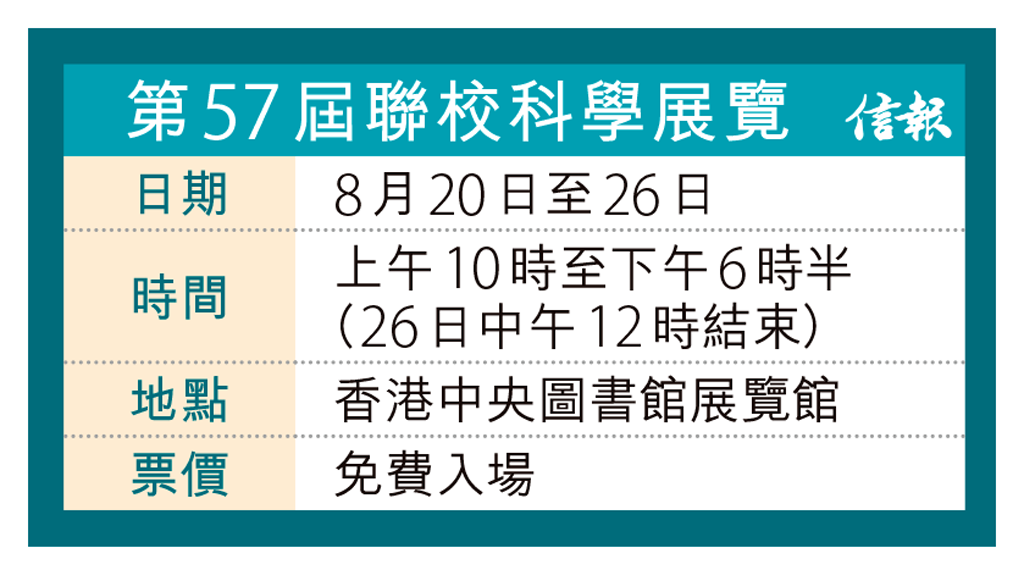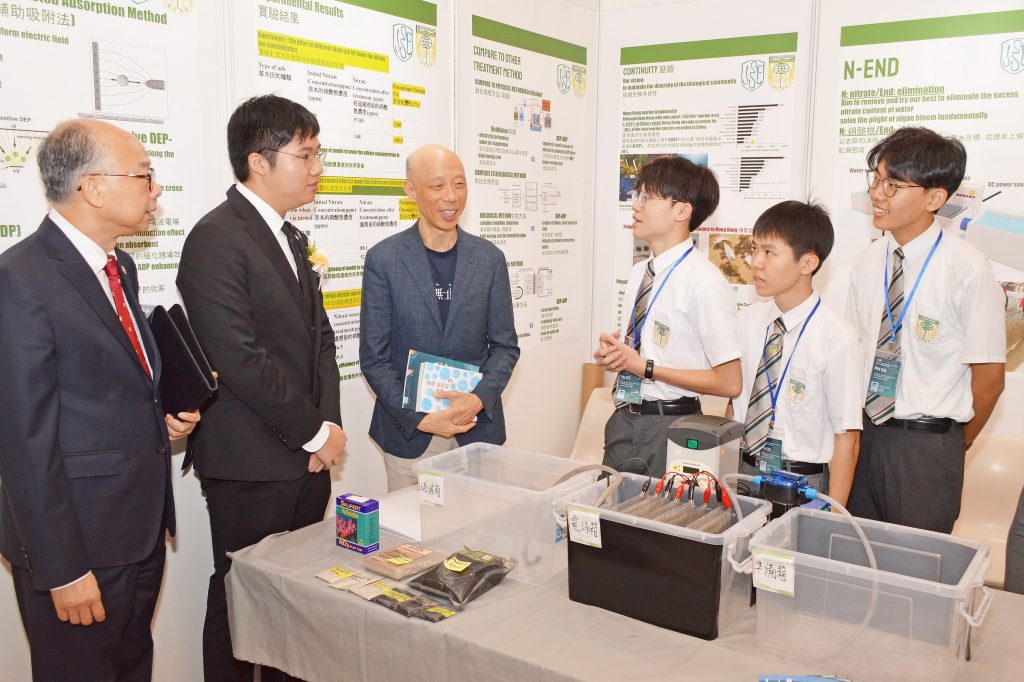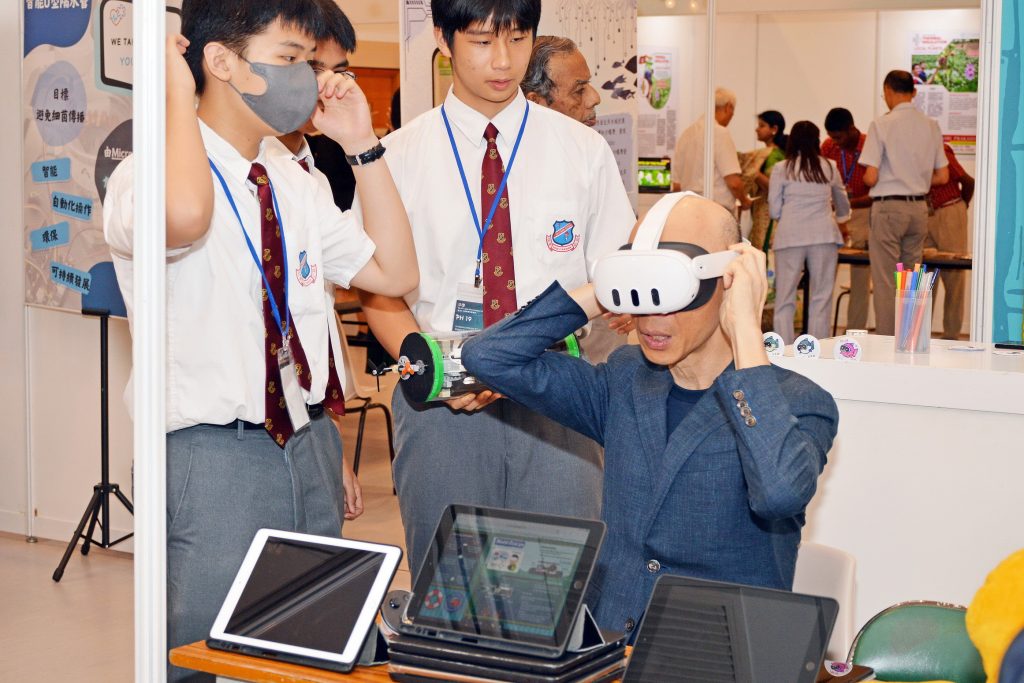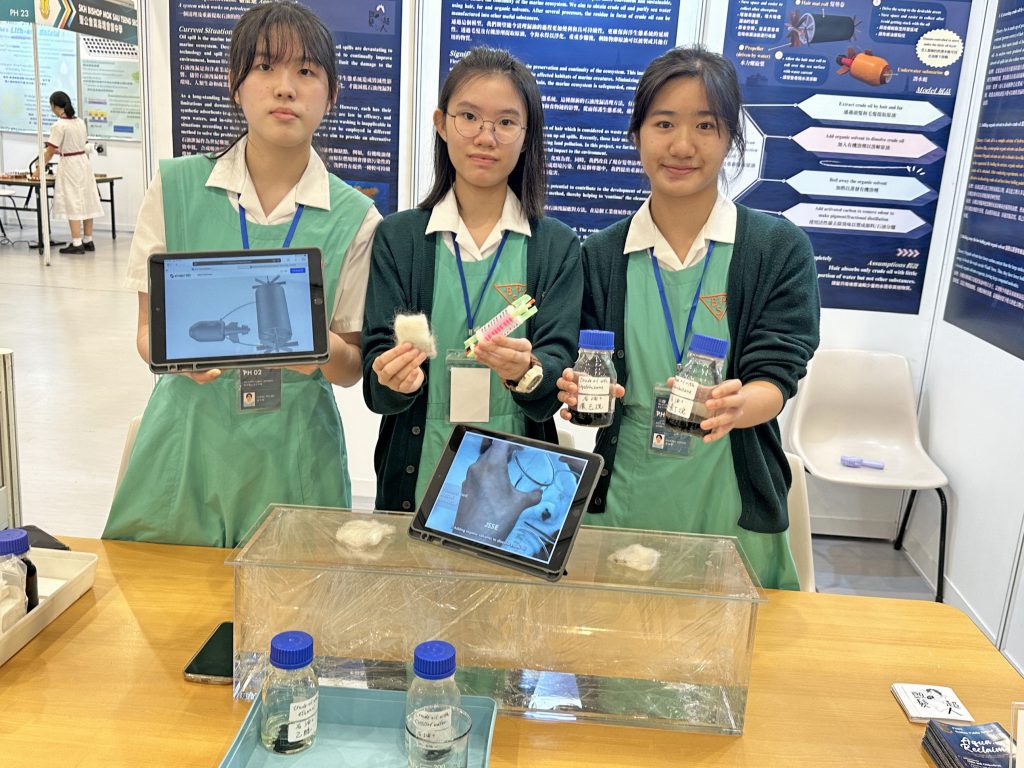
[ad_1]
originalPublished in Hong Kong Economic Times Financial NewsEJ Tech Innovation Lab“
Annual academic eventThe 57th Joint School Science Exhibition (JSSE)opened yesterday at the Hong Kong Central Library Exhibition Hall. This year’s theme is “Continuity”, and a total of 28 groups and 22 teams of secondary school students will be exhibiting their elaborate scientific inventions. In addition to local representatives from the Hong Kong University of Science and Technology, the Chinese University of Hong Kong and the Polytechnic University, Thailand and India also sent delegations to Hong Kong to participate in the exhibition. There is a parent-child science workshop on site to explore STEM (science, technology, engineering and mathematics) knowledge from kinetic sand.

Styrofoam becomes glue printer supplies
The “Best Project Award” of this year’s science exhibition was won by Cheung Sha Wan Catholic English Secondary School. Its N-End device mainly uses “electrophoresis-assisted adsorption method” (DEP-ADP) to connect the DC power supply to the stainless steel mesh plate of the treatment tank, and uses plant ash to reduce the excessive nitrate content in the river to solve the red tide problem. The “Ocean Floating. Strange Fish Mirror” of the Salesian English School demonstrated the use of virtual reality (VR) technology to remotely control mechanical fish to explore the underwater world; former Secretary for the Environment Wong Kam-sing also put on the Meta Quest 3 goggles to experience it personally during the on-site visit.


Many student inventions on site were related to the ocean and wastewater. Beleros Girls’ School exhibited AQUA.Reclaim, which uses hair and fur to absorb oil on the sea surface. Minsheng College studied the use of wood chips to filter microplastics, and Sheng Kung Hui Li Ping College used 3D printing technology to design a bionic conch water filter to block microplastics in seawater, hoping to alleviate Hong Kong’s water pollution problem. St. Paul’s College introduced Roburalga, which advocates the use of sodium alginate gel to remove heavy metal ions from water sources, irrigation systems and industrial wastewater.

Seeing that Hong Kong’s landfills are about to be filled, many teams have come up with an environmentally friendly way to deal with the city’s solid waste.Expanded Polystyrene (EPS)98% of the volume is usually air. The “Bubble Green Sticky Treasure” developed by Po Leung Kuk Lee Shing Pik Secondary School extracts limonene from shredded orange peels, converting foam into a new type of glue, greatly reducing the volume of waste. The Poly-Tricle project under Hong Kong Tang King Po College also thought of using limonene to dissolve EPS, distilling it to obtain polystyrene (PS), and then upgrading it to 3D printing filaments and other consumables.
The final top three awards were presented at the closing ceremony
If we want to reduce solid waste, we should start by reducing waste at the source. In response to the prevalence of online shopping, Po Leung Kuk Ngan Po Ling College has developed a smart wardrobe, Smart Wardrobe, which uses radio frequency identification (RFID) tags to record the use of personal clothing, and reminds users through mobile applets to reduce unnecessary purchases, and provides recycling information to cultivate sustainable consumption habits.
The Joint School Science Exhibition has attracted more than 30,000 visitors over the years, providing a STEM practical platform for secondary school students. Local secondary schools are required to submit work plans, and the teaching team will select 22 outstanding shortlisted works; the shortlisted teams will then produce exhibits according to the plans and display them publicly at the exhibition. The final top three will be awarded at the closing ceremony next Monday, and the public can vote for the “Most Popular Award” and “Best Demonstration Award”.
Support EJ Tech


If you want to submit articles, report information, issue press releases or interview notices,Click here to contact us.
//
[ad_2]
Source link

